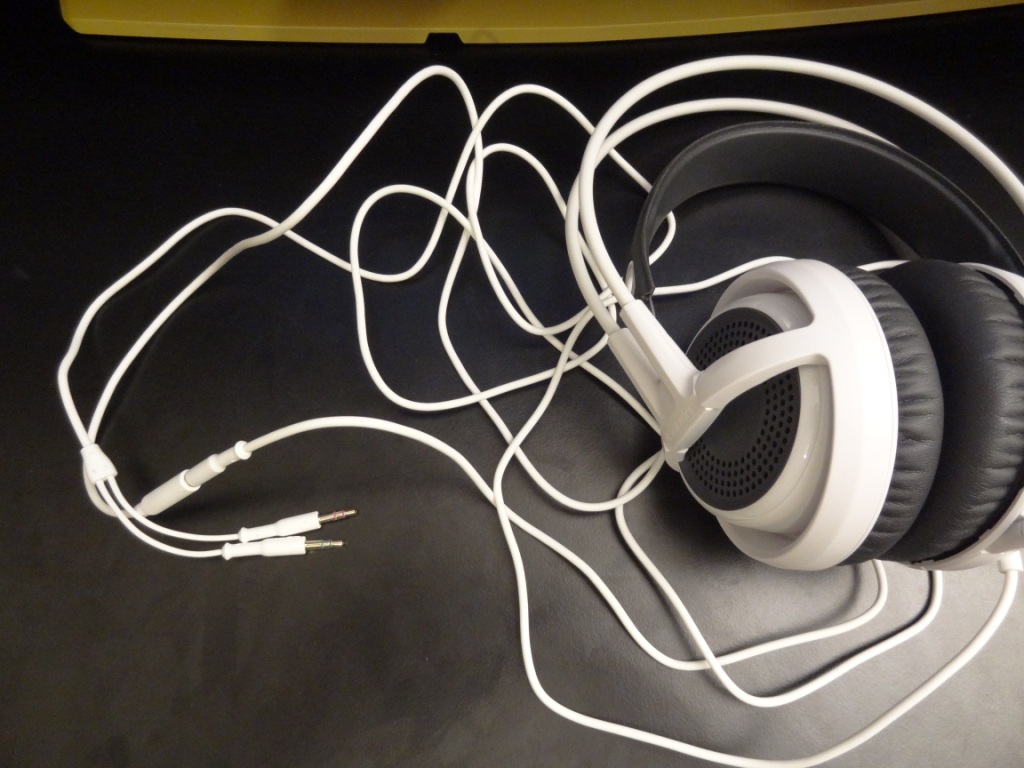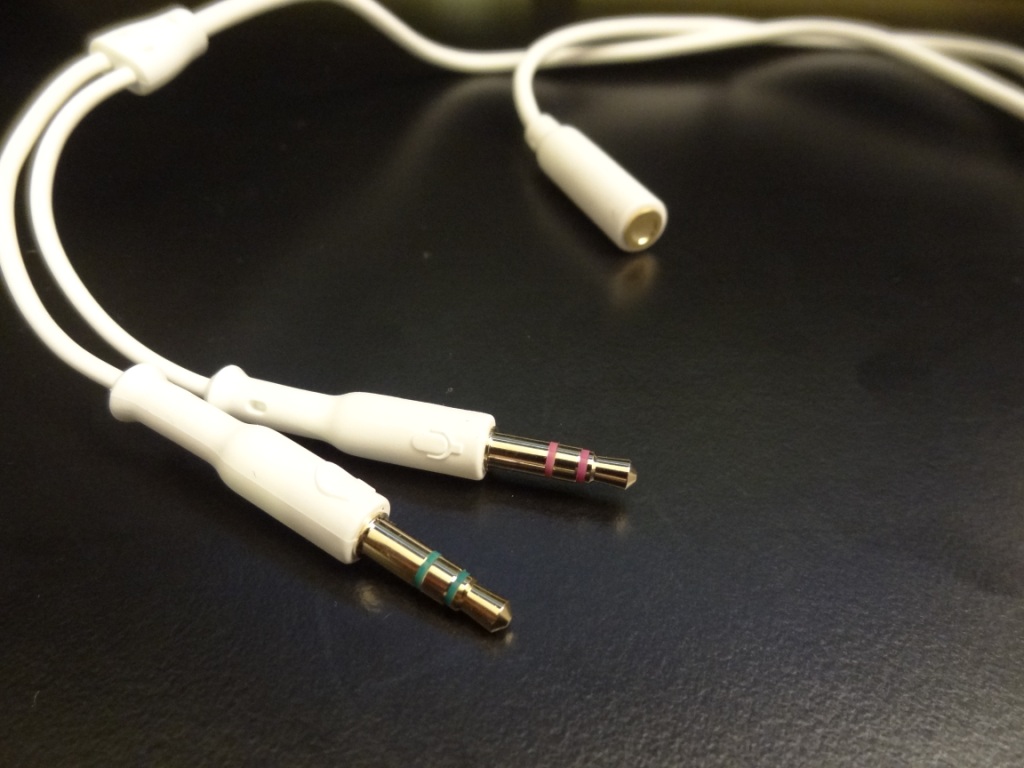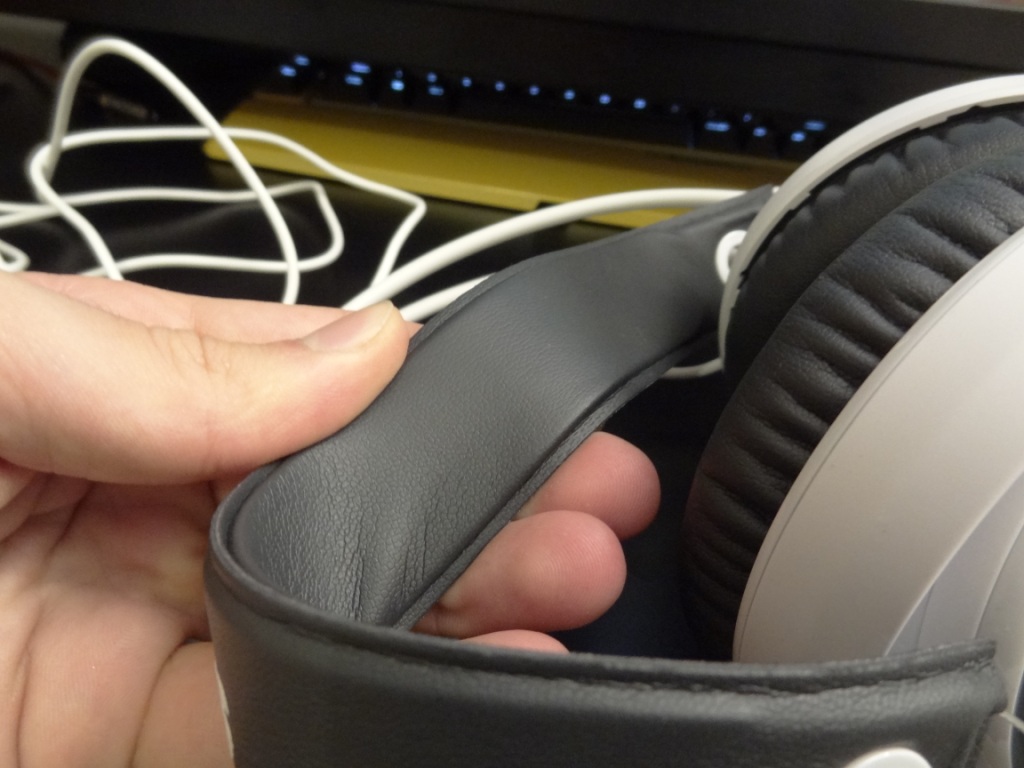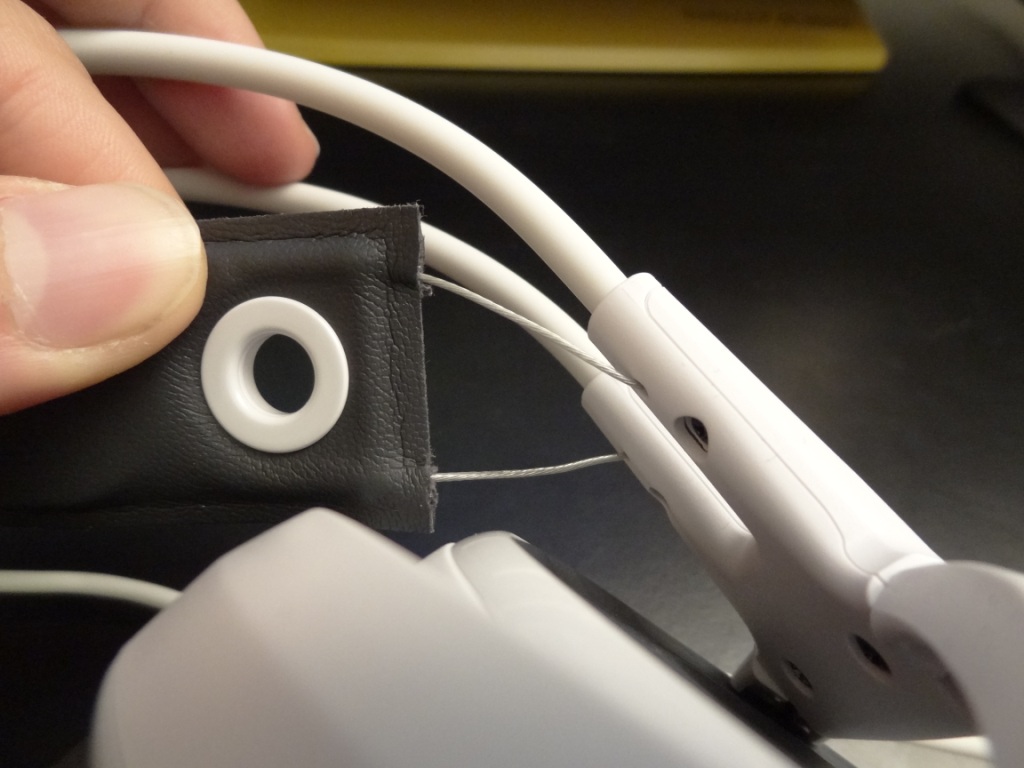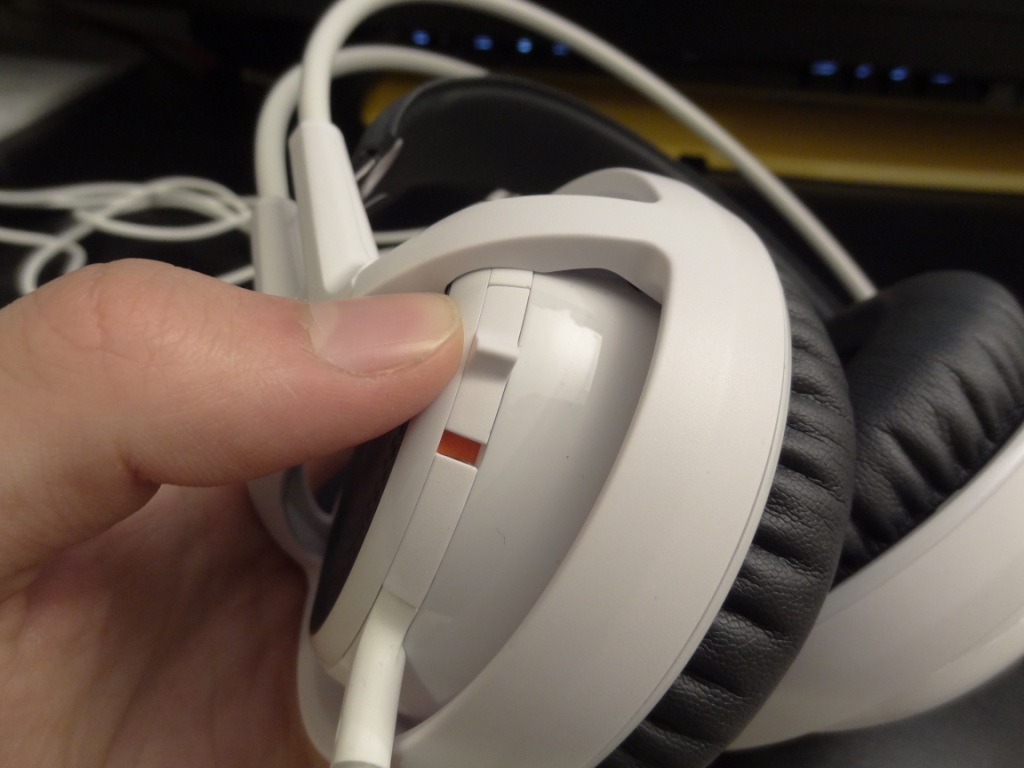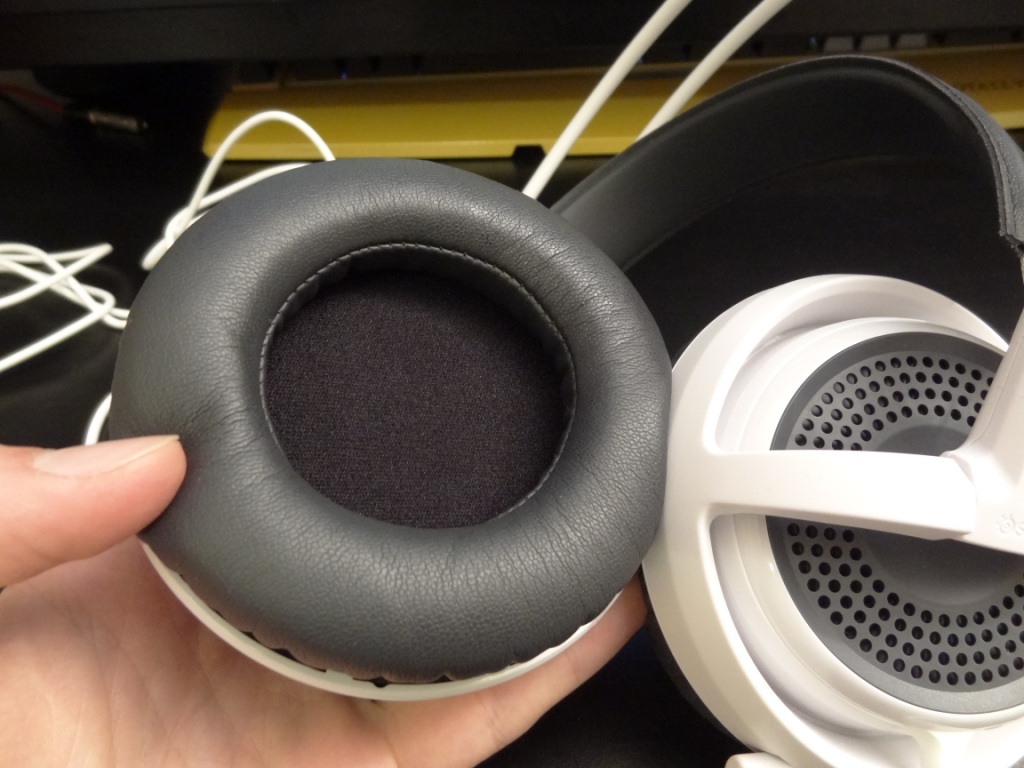Pros: Build quality, comfort, lows, can be used wth the PS4 and Xbox One
Cons: Mids, highs, isolation, no included USB soundcard (like on the V2 model), sound quality is limited by your on-board soundcard, no volume/recording control
Build quality: 7.5/10
Comfort: 9.5/10
Overall sound quality for a headset: 6.5/10
Isolation: 6/10
Microphone quality: 10/10
Value: 8.5/10 (at £100 price tag)
Overall rating: 7/10
First of all I would like to thank SteelSeries for sending me their headset for review. After having received the Siberia V2, 9H, Siberia Elite and H Wireless, I was interested in knowing how the V3 had changed over the SteelSeries Siberia V2 Heat Orange Gaming Headset.
The headset can be bought for around £115 on AmazonUK & AmazonUSA for $100. Prices of the headset vary greatly – from £75 to £130 -therefore this review will be based on the £100 price tag, just as the V2 was priced when I reviewed it.
For more information about the headset and its specifications can be found on SteelSeries’ website.
Here’s my video review:
Now let’s get into the written review!
Packaging and contents
Starting off with the packaging, it gives off an extremely good impression of what will lie inside. A big, solid box that has a nice texture to it. A SteelSeries classic now, where every box is made in the same mind-frame, no matter the unit cost. This is something I respect from companies, as they treat all their customers equally.
Inside the box, what you get is extremely simple – the headphones and an extension cable that’s terminated with a mic and line out straight gold-plated 3.5mm jacks. You also get a sticker and some manuals. It’s quite disappointing to not really find anything else in the box – more on this in the build quality and design section.
Build quality & Design
The V3, as said above doesn’t come with anything else other than the extension cable and it’s a shame that there’s no additional ways of connecting the headset, especially not a USB soundcard or an option to have a USB powered headset. On the V2 you only had one choice, the USB connection, which limited its functionality to PC only – now on the V3 you’re no longer limited in the sense of connections, but you are severely limited in terms of sound quality as you have to result on only your source. By this I mean previously with the V2, no matter how good or bad your soundcard was you had the USB soundcard to rely on. Now, you have to rely on your own source – and in my respect my on-board Asus Z77 Sabertooth’s soundcard is absolutely horrendous – so much so that a simple £1 (yes one pound) USB soundcard I bought for my ModMic 4.0 has better recording sound that my £160 Asus Sabertooth motherboard. What I’m trying to say is that in order to get the most out of the headset, you’ll need to invest in a soundcard – probably a Asus Xonar DG or sort, cheap and cheerful, but still means you need the PC space (which I don’t have in my PC, due to having SLI GTX 680s) or the need to spend extra money.
I can understand why Steelseries removed the USB, to incorporate console gamers, which is great, but in doing so they also reduced the sound quality of the headset, as people have to rely on their on-board sound. I would have liked a separate extension cable that would be terminated with a USB – in order to cater for everyone. those with soundcards can use the auxiliary connection, those with on-board sound can use the USB soundcard Steelseries normally provides and console gamers can simply plug in the headphones without the need of any extension cable. I don’t think SteelSeries really thought this one through thoroughly.
Moving on from the termination of the headset and the extension cable, the actual headset has a straight gold-plated 3.5mm jack that’s non-removable. It goes into the headset on the left-hand side, where the retractable microphone is located. A small note on the mic – I really love the design and hope Steelsereis never drop it – it’s a flawless design, the best design I’ve personally come across in headsets.
Now onto the build quality of the headset – it’s built out of plastic, which comes to no surprise as the V2 was made in the same way – this means the headset feels a little cheap, but in fact is a great material to use for its lightweight nature and overall flexibility. In this respect the headset feels very strong – when bending it, the headset feels in no way that it’s going to break, which also doubles up as having great ergonomics, for people with bigger heads.
As we look around the headset, we can see that the same design that was present in the V2 is present in the V3’s headband. The comfortable design really adjust to all shapes and sizes of head and is a great design feature – again a feature that I loved and would like to see in more headphones/headsets. The headband though has changed slightly in design – by that I mean the padding underneath the leather/pleather headband is no longer of a “furry” or “velour” material. I don’t know if this really changes anything for the longevity or comfort, but personally I didn’t notice any sort of difference. Either way, it’s a great design.
Looking at the headphone’s drivers more closely, on the left-hand side, there’s a small switch, which is to toggle the mute of the mic. I really like this design, makes it easy to access and use – however I don’t like the fact that Steelseries, got rid of the volume control on the wire. It was something that was useful for gamers and would be extremely useful for those that game on console. rather than faffing around with the in-game/in-console sound, Steelseries could have easily included this small console to provide gamers more control over their headset. Yet again, not sure why Steelseries decided to get rid of a useful feature.
Overall, the build quality of the headset is very good – but due to having reviewed the V2 previously, I’m disappointed to see some features ignored and/or removed.
Comfort & Isolation
The overall isolation of the headset isn’t great, due to the fact that it is essentially an open-back headphone. So yes, before you ask your music will leak – that’s to be expected really.
One thing that slightly concerned me on the V2 was the comfort, I’m pleased to say that the comfort has drastically improved, due to the “memory foam” pads. Just as a quick side note – I don’t really think they’re memory foam, as I’ve previously used Comply Foam headphone pads and use Comply Tips daily and that’s real foam material for you. This on the other hand didn’t really feel like foam – and if it really is foam, then it’s extremely weak in “memorising” your shape.
Either way – I don’t really care what it’s made out of, what I do care about is the comfort has gotten much better – it isn’t just perfect for me yet, as the driver hole is circular and not rectangular yet – and the pads aren’t that thick.
With that said, overfall, I can’t fault it by much and therefore I am definitely happy with the improvements made here.
Sound quality & Microphone Quality
Before getting into it – I should state I did all my sound quality testing via my phone (which I use for audiophile reviews too) and NOT my crap on-board sound and/or the cheap USB soundcard (which is only really useful for recording). I did try the headset with a Xonar D1 and it sounded a lot better than my on-board Z77 Sabertooth sound, but not really better than my phone’s Wolfson DAC.
Now the sound quality is an essentail part of any headset and the V2 greatly impressed me – it had a nice mid-range response, the highs were decent (with that AKG-esk roll-off) and the lows being almost non-existent at times. Finally the V2 had an extremely impressive soundstage, which was great for positioning and movement noises in games.
I’m happy to report that the marvellous soundstage is still present, however everything else has pretty much changed.
The lows have been ramped, quite significantly in quantity – mainly the mid-bass response. Now the V3 has a nice slam to it, whereas the V2 was pretty dead-sounding. The sub-bass is still not really that present and unfortunately the V3 cuts off when the headset tried to reach those sub-bass responses.
Although this is positive, the mids and highs took a significant hit, mainly the mids. The mids now are completely drowned out, pushed back into a cave and locked up with nowhere to go. Unfortunately due to Steelseries fielding with the lows, it affected the mids – and to me that was one of the main features and “love” I had for the V2. Dare I say it, it sounds more like a Beats by Dre product now, with a bit too much emphasis on the lows and drowned mids.
yet again, I know why Steelseries changed it, but did they have to change it at such an extreme? I’m not sure.
This seems very negative, but the sound is still very good for a headset, just not “signature” Siberia any more – it sounds like any generic headset, with just a very open soundstage. I just wish Steelseries had adjusted the bass frequency a dial back and left the mids as they were previously – then we would have been onto a real winner.
Finally to close this section – the recording quality was excellent. I tested this via the USB soundcard, simply because I use that frequently with my ModMic 4.0 and it does a flawless job. I was really impressed with the way my little USB soundcard, it did a valiant job in giving a great, crystal, static-free and HDD noise-free recording test.
The only thing I noticed was that there was no noise-cancellation, therefore I could hear my mechanical keyboard quite well, during playbacks of my recordings, whilst I was talking and typing at the same time. I’m sure you can get noise cancellation features, for example most on-board soundcards and/or soundcards have such features – but I didn’t use them in my testing.
Conclusions
Overall the headset sik a little hit and miss – I do like the added comfort and the better bass response, however I don’t like the fact that there’s no USB soundcard included, nor volume control, like on the V2 and most importantly dislike the new sound signature of the headset. Again, it’s not that it’s got a bad sound, it’s just that I much preferred the V2 AKG-esk sound signature (and that’s coming from someone that loves a good meaty bass rumble). I would honestly suggest lookinga tthe V2 then EQ’ing it via the software, or if you’re a console gamer/someone that much prefers bass, then I can see the V3 being the better option for you.
Hope you enjoyed my review!
–TotallydubbedHD



